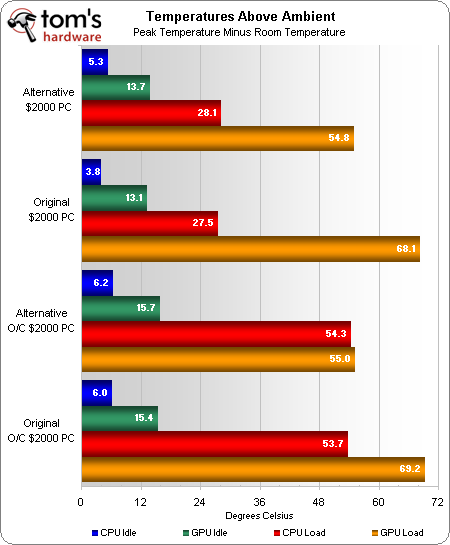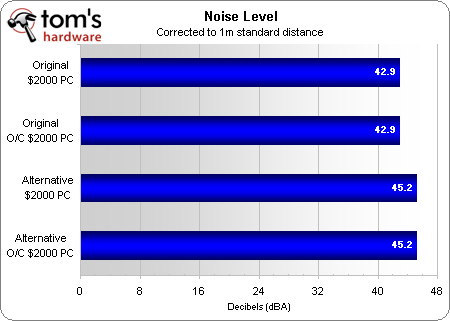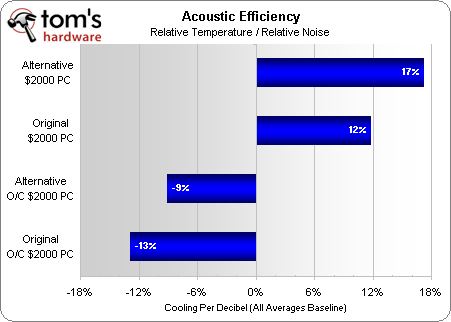System Builder Marathon, June 2011: Alternative $2000 PC
Benchmark Results
Cooler Master’s HAF X adds an intake fan to the side with enough airflow to force air towards the front of the case, where the graphics card intake fans can be found. This dramatically improves graphics cooling, but not overclocking, since the cards never even approached their cooling limits.
GPU fan speed was manually set to 55% for all tests.
Perhaps surprisingly, the Lian-Li case provided slightly lower CPU temperatures, in spite of reduced overall airflow.
Observations from former case comparisons could provide an explanation. We’ve previously noticed that ducting an upright CPU cooler to the case’s exhaust fan increases airflow through the CPU cooler’s fins. Smaller cases occasionally simulate this duct by boxing the CPU cooler between the graphics card, case top panel, and side panel. That is to say, increased air velocity can be slightly more beneficial than reduced case temperature when it comes to CPU cooling.
The difference in system noise wasn’t large, but it was noticeable. A change of 3 dB is the equivalent of having twice as many fans in the system, but a change of 10 dB would be required for the noise to sound twice as loud.
While decibels are on a logarithmic scale, a direct-scale comparison of the new build’s cooling to noise ratio puts it ahead of the former build, completely due to its lower GPU temperatures.
Get Tom's Hardware's best news and in-depth reviews, straight to your inbox.




